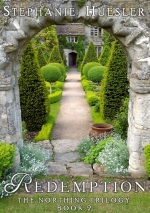I write 5 blogs, 4 of them on a weekly basis; I like to find interesting topics, though there are times in the year that can get a bit crowded with other activities. Christmas has just passed, and at the moment we have a teenager living with us; the topic of family traditions came up a few times, and it’s a good reminder that within even the same culture there can be variations of traditions.
I was born and raised in America, emigrated to Scotland, and am now 100% Swiss; my husband is 100% Swiss, came to Scotland, met me, and inherited my mixture of cultures (which fits fine in our multi-culture family). When I lived in America the Christmas tree went up shortly after Thanksgiving; in Scotland, if it went up, it was around the first of December; here in Switzerland the trees usually go up on the 24th of December, so in our household we’ve made a compromise and do it the Scottish way. For over ten years we’ve had a silk tree rather than a real tree; we just could not support the ecological consequences of chopping down a tree that had grown for several years, just to spend a fortnight dying in our living room and then to be tossed out with the compost. The silk tree looks real, doesn’t drop needles or need watering, and has served us well for quite some time. When it comes time to replace it, the tree will be taken back to the shop and they will dispose of it ecologically (that has already been paid for in the price of the original tree). Swiss are extremely ecologically-minded; there is a “joke” (though it’s not far from the truth!) that after drinking a tea the Swiss will put the tea bag contents into the compost, the bag into the old paper collection, the string into textiles recycling, the staple into the metal collection, and the cardboard tag into the cardboard collection!

One of my handmade ornaments from a beer can!
Our Christmas decorations are otherwise modest, nothing too flashy, but we have taken the North American tradition of Christmas stockings to heart. I am gradually replacing our store-bought decorations with handmade ones; I make them from recycled drink cans and a bit of embossing ingenuity (For that process, click here).
In Switzerland the traditional Christmas meal is Fondue Chinoise; we only really do that if we get together with the wider family as it is quite a lot of effort for just the two of us. In Scotland, the favoured meal was Haggis with tatties and neeps. I do miss the Christmas crackers on the table in Scotland – not the food-type crackers, but table favours with small firework-snaps in them: Two people pull one apart, and as it snaps a surprise gift comes out. There were also the table bombs, with exploding gifts (like a piñata in reverse…). Here, the intimate family circle celebrates together on the 24th, and on the 25th is family day with in-laws and the wider family; the 26th (Boxing Day) is also a holiday, usually spent with the other side of the family, or spent travelling back from the 25th (which is how our Boxing Day is spent, as our family Christmas involves either everyone coming here, or – more often – us going to France).
Every family has their own traditions; when two people marry they bring with them all sorts of expectations, impressions, preferences, habits and memories that form who they are, why they act the way they do sometimes, and how things “should” or “should not” be done. And as they make compromises, new traditions are born. That’s what makes cultures and mentalities, and eventually national traditions evolve over time! What are your family traditions? How much of it is from your culture, and how much is from your family’s individual traditions?
 Hnefatafl (King’s Table, aka “Viking Chess”) is a board game that originated in Northern Europe in the early part of the first millennium. The oldest board found to date was located in Denmark, dated to ~ 400 BC. Because no written history of that period exists the rules of this game had to be recreated, so there are no hard and fast rules agreed upon by those who play it.
Hnefatafl (King’s Table, aka “Viking Chess”) is a board game that originated in Northern Europe in the early part of the first millennium. The oldest board found to date was located in Denmark, dated to ~ 400 BC. Because no written history of that period exists the rules of this game had to be recreated, so there are no hard and fast rules agreed upon by those who play it. 




